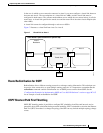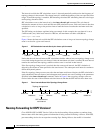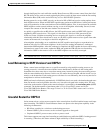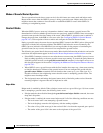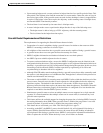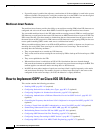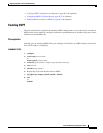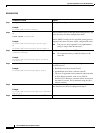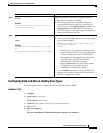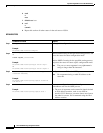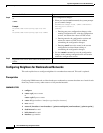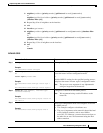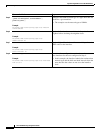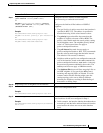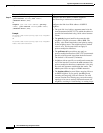
Implementing OSPF on Cisco IOS XR Software
How to Implement OSPF on Cisco IOS XR Software
RC-147
Cisco IOS XR Routing Configuration Guide
Configuring Stub and Not-so-Stubby Area Types
This task explains how to configure the stub area and the NSSA for OSPF.
SUMMARY STEPS
1. configure
2. router ospf process-name
or
router ospfv3 process-name
3. router-id {ipv4-address | interface-type interface-instance}
4. area area-id
5. stub [no-summary]
or
nssa [no-redistribution] [default-information-originate] [no-summary]
Step 7
log adjacency changes [detail] [enable |
disable]
Example:
RP/0/RP0/CPU0:router(config-ospf-ar-if)# log
adjacency changes detail
(Optional) Requests notification of neighbor changes.
• By default, this feature is enabled.
• The messages generated by neighbor changes are
considered notifications, which are categorized as
severity Level 5 in the logging console command. The
logging console command controls which severity
level of messages are sent to the console. By default, all
severity level messages are sent.
Step 8
end
or
commit
Example:
RP/0/RP0/CPU0:router(config-ospf-ar-if)# end
or
RP/0/RP0/CPU0:router(config-ospf-ar-if)# commit
Saves configuration changes.
• When you issue the end command, the system prompts
you to commit changes:
Uncommitted changes found, commit them before
exiting(yes/no/cancel)?
[cancel]:
–
Entering yes saves configuration changes to the
running configuration file, exits the configuration
session, and returns the router to EXEC mode.
–
Entering no exits the configuration session and
returns the router to EXEC mode without
committing the configuration changes.
–
Entering cancel leaves the router in the current
configuration session without exiting or
committing the configuration changes.
• Use the commit command to save the configuration
changes to the running configuration file and remain
within the configuration session.
Command or Action Purpose



